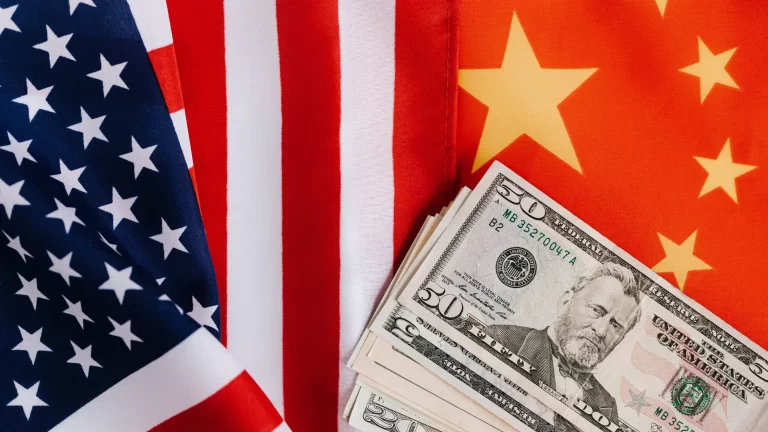Why US Tariffs Won’t Derail China’s Global Strategy

While America leans on tariffs and sanctions to reassert its global dominance, China answers with patience, pragmatism and a 5,000-year historical memory.
A Civilization That Thinks in Centuries
When a Chinese official responded to questions about U.S. sanctions by reminding the world that China is a 5,000-year-old civilization, it was more than diplomatic theater. It was a subtle yet forceful assertion of civilizational permanence. In contrast, America’s 248-year existence is a brief flare – brilliant, yet historically fleeting. The message was simple: “We have seen empires come and go. We will still be here.”
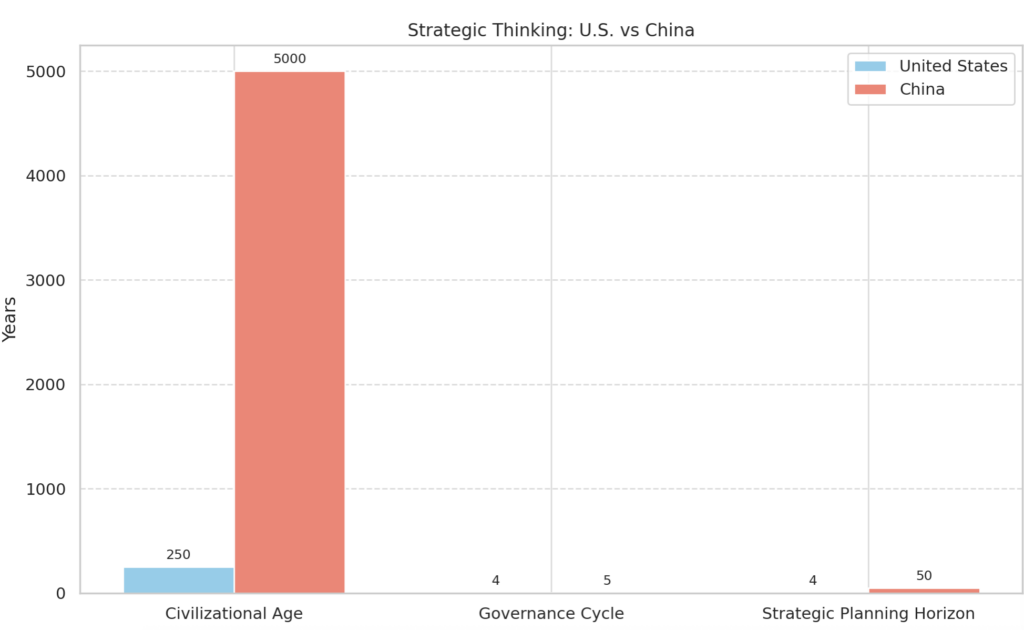
China’s response to escalating U.S. pressure has not been reactionary. It has been strategic. While Washington tightens tariffs and sanctions, China continues quietly entrenching itself in global supply chains, building influence through infrastructure investment, trade partnerships, and diplomatic consistency.
The Global Supply Chain is the Real Battlefield
Sanctioning China isn’t as straightforward as it was with Cold War rivals. The U.S. and China are deeply interlinked through trade. Nearly every iPhone is assembled in Shenzhen. Boeing jets rely on Chinese components. A trade war with China doesn’t just target a rival; it disrupts a global economic system that Americans themselves helped create.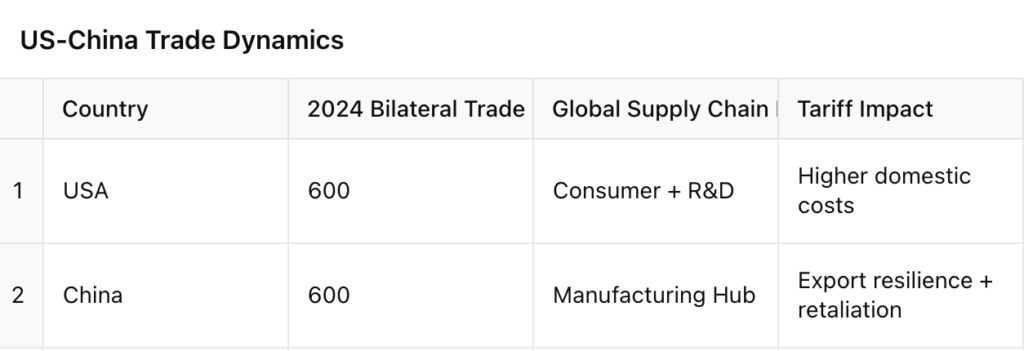 Efforts to “reshore” manufacturing to the U.S. – a pillar of Trump-era policy – clash with decades of industrial offshoring driven by capital’s pursuit of low costs. While the political slogans promise jobs returning to Detroit, the economic reality is that the U.S. consumer pays the price via higher inflation.
Efforts to “reshore” manufacturing to the U.S. – a pillar of Trump-era policy – clash with decades of industrial offshoring driven by capital’s pursuit of low costs. While the political slogans promise jobs returning to Detroit, the economic reality is that the U.S. consumer pays the price via higher inflation.
Tariffs, rather than reshaping trade, often merely re-route it. Chinese goods enter the U.S. through third countries, and retaliatory tariffs from China hit American farmers, small exporters, and tech firms. It’s a game of brinkmanship with no clean wins.
The Chinese Advantage: Strategic Patience and Economic Interdependence
Unlike the American political cycle, which turns every four years, China’s long-term planning spans decades. The Belt and Road Initiative, the Asian Infrastructure Investment Bank, and its deep integration with ASEAN economies are all signs of strategic foresight.
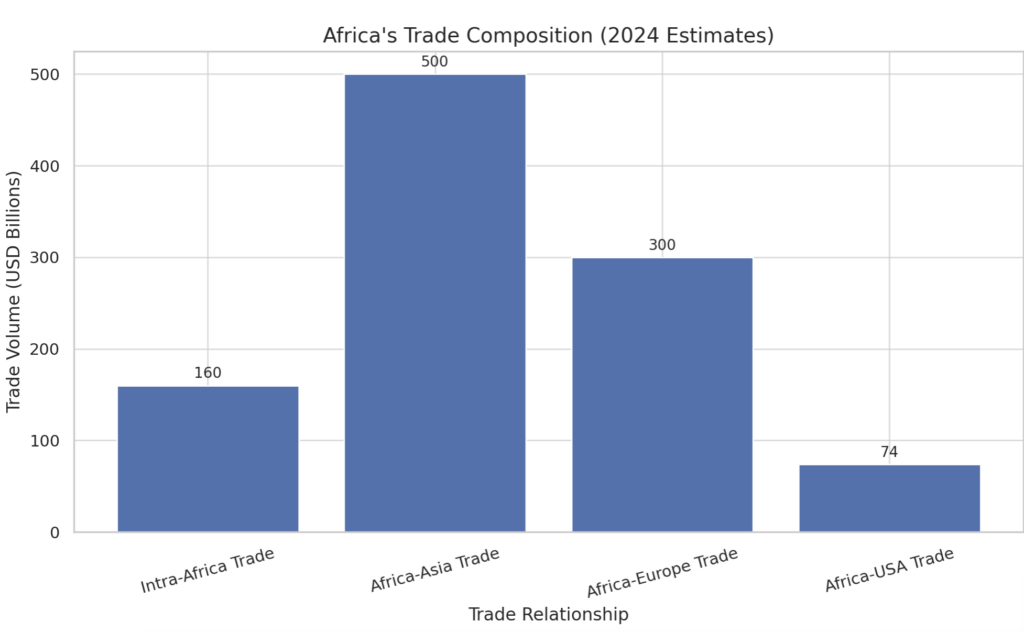
While U.S. foreign policy swings wildly depending on the administration, China maintains a consistent message: mutual benefit, infrastructure-first diplomacy, and non-interference. This resonates strongly across the Global South – from Brazil to Kenya – where historical resentment of Western paternalism still lingers.
Africa’s Awakening: Trade Within, Not Just With
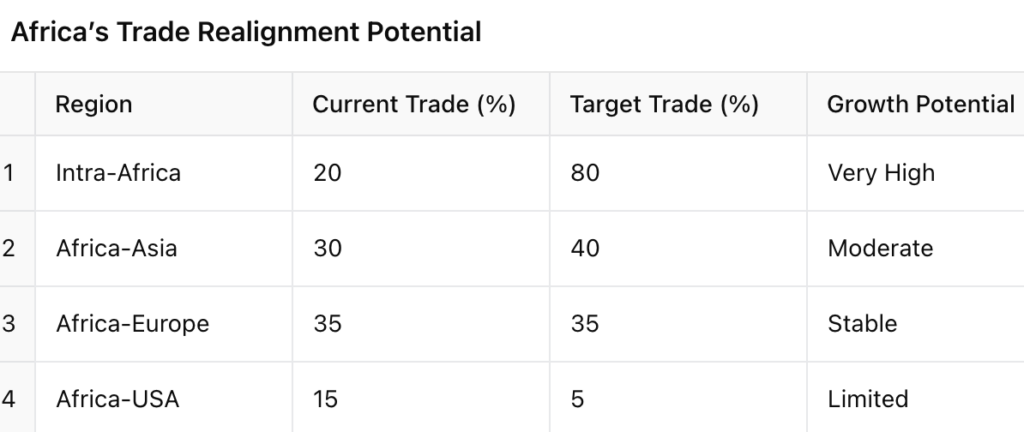
African countries, long bound to Western trade relationships, are beginning to reimagine their economic future. The African Continental Free Trade Area (AfCFTA) aims to boost intra-African trade from 18% to over 60%. In this scenario, Africa becomes less dependent on exporting tea to the UK or coffee to Switzerland. Instead, Tanzanian maize feeds Kenya, and Ghanaian cocoa is processed in Lagos.
China is quietly facilitating this shift. Unlike Western lenders who often attach governance strings to aid, Chinese funding is presented as neutral – even if it’s not entirely altruistic. In turn, African nations see a partner willing to build roads, ports, and power plants without lecturing on democracy.
The BRICS Counterweight and the De-Dollarization Drive
At the heart of the changing global order lies a fundamental economic battle: the U.S. dollar versus a multipolar monetary system. The BRICS bloc – Brazil, Russia, India, China, South Africa, and others – is pushing to reduce dependency on the greenback. They are not seeking to destroy the dollar, but to build alternatives: yuan settlements, gold-backed trade, and possibly a digital BRICS currency.
For America, this represents a seismic shift. Dollar dominance underpins the U.S.’s ability to run perpetual deficits, fund global military operations, and export inflation. If BRICS-led de-dollarization gains traction, it could erode Washington’s financial leverage – precisely what sanctions were meant to protect.
Toward a Post-American Global Order?
What the world is witnessing is not a hostile Chinese takeover, but the steady rebalancing of global power. A collaborative China, not a conquering one, is proving more attractive to the Global South. From Kenya to Brazil, countries are increasingly hedging their bets – not against the U.S., but against volatility in U.S. policy.
The ultimate irony? While Washington warns the world about Chinese authoritarianism, it is often China that offers predictability, infrastructure, and long-term thinking – without the moralizing.
As nations adjust to this new world, one thing becomes clear: sanctions and tariffs cannot undo a century of economic integration. Nor can they dim the ambition of a civilization that has already weathered millennia.
In this quiet but profound global transformation, the West wields blunt tools – sanctions, tariffs, and rhetoric. China counters with time, scale, and subtlety. The 21st century may not belong to any one country, but the game is shifting. And those who play the long game usually win.

